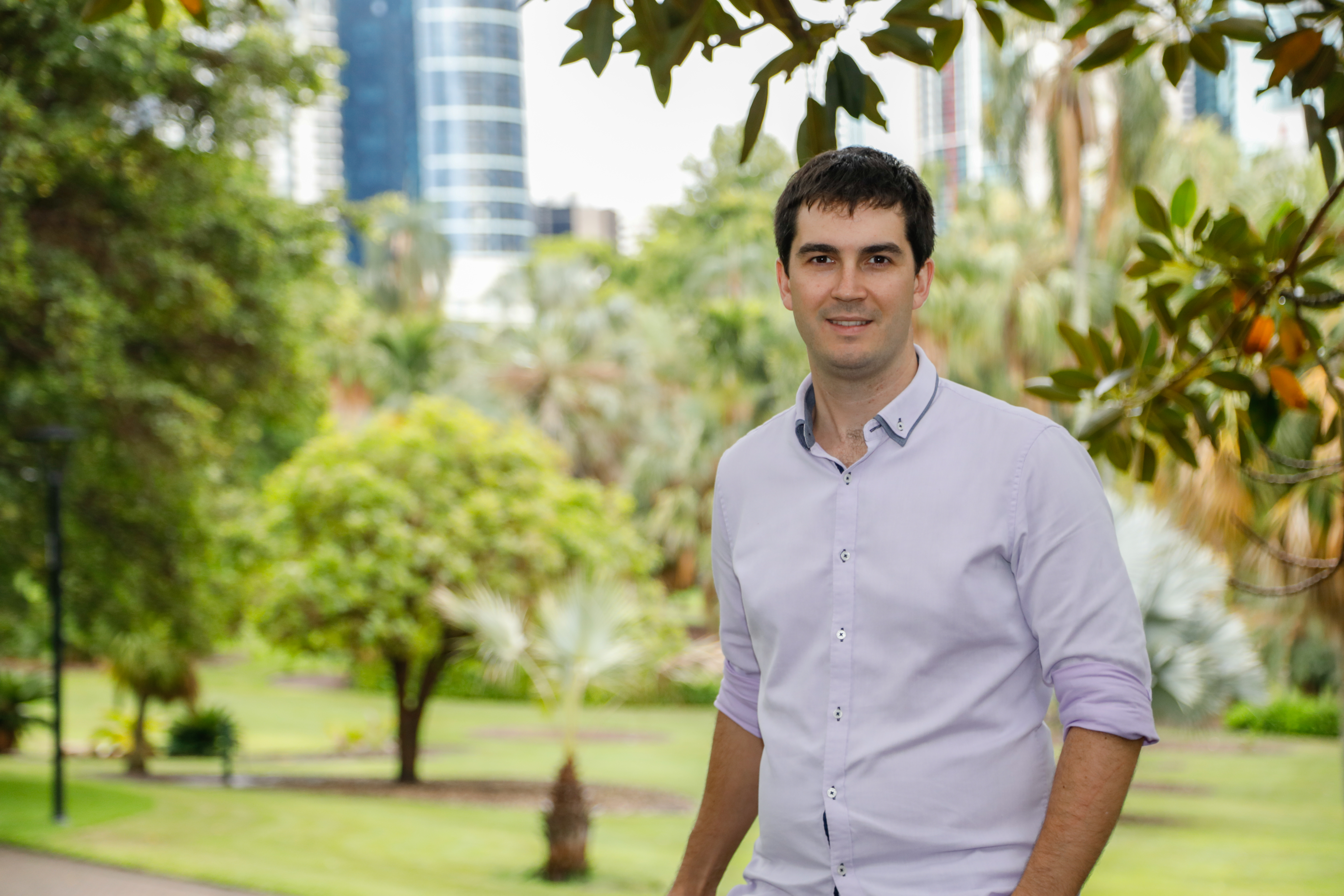A robotics engineer based at Queensland University of Technology (QUT), Dr Chris Lehnert specialises in solving commercial automation challenges, developing novel solutions for an array of real-world applications.
Right now, he’s working across the Future Food Systems CRC’s Research Program 2, applying his technical expertise to assessing the viability of automation technology, in conventional greenhouses and in the emerging industry of smart modular indoor cropping.
As part of QUT’s participation in the CRC, Dr Lehnert led the first ‘fieldwork’ phase of the ‘Modular vertical Growing system’ project with industry partner Greenbio Group.
Dr Lehnert is now leading an exciting Future Food Systems CRC project with industry partner P’Petual Holdings. In this project, he and the team at QUT Robotics Centre are developing a navigation algorithm enabling a robotic platform to navigate the rows of P’Petual’s high-tech commercial indoor cropping facilities. The team’s research will deliver a platform that interacts with an array of robotic equipment, enabling P’Petual to automate routine tasks within its greenhouse crop production and harvest.
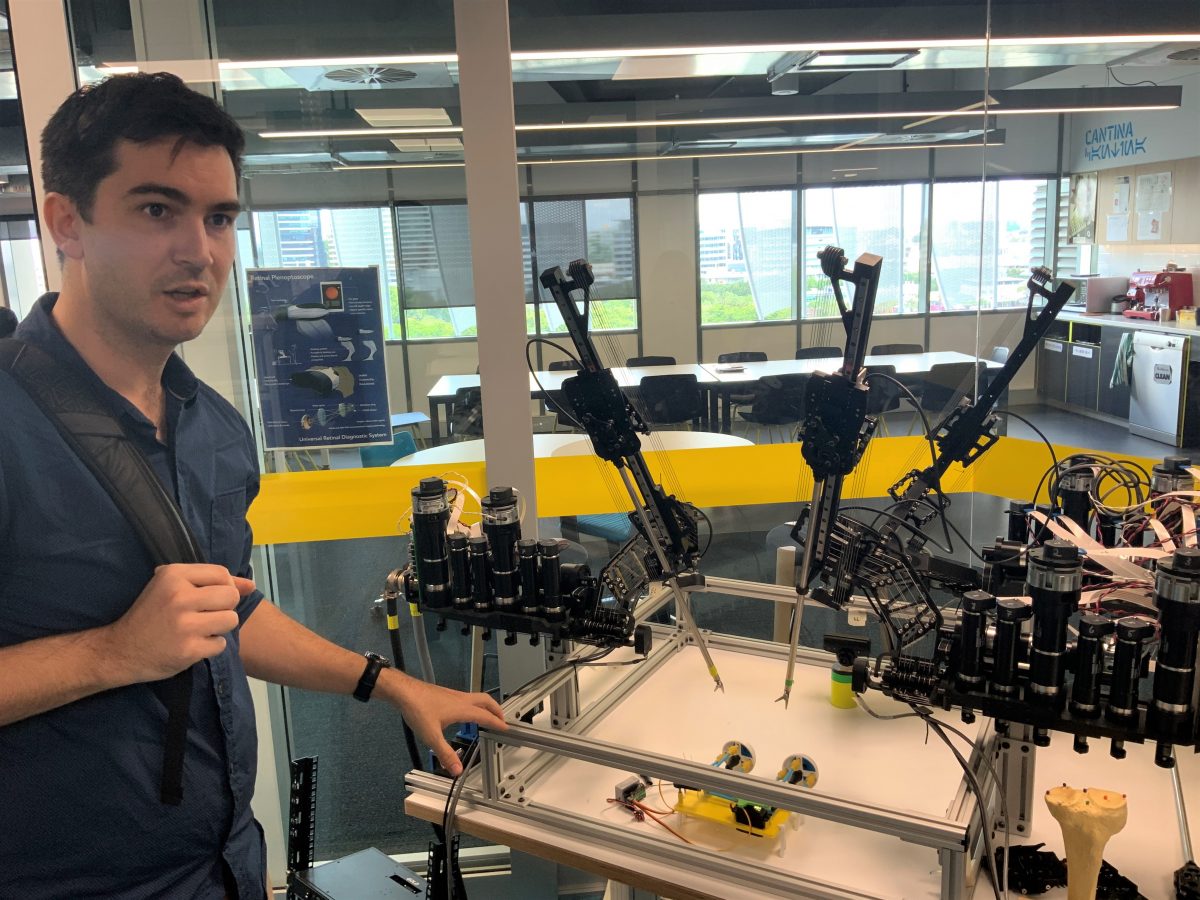
Dr Chris Lehnert in the lab. Credit: QUT
For much of the past decade, Chris Lehnert has been poring over axles, sockets and circuitry, designing, constructing, testing and fine-tuning industrial and agricultural robots and automated systems for use in everything from environmental monitoring to large-scale industrial management and advanced indoor horticulture.
Soon after completing a Bachelor of Engineering at University of Queensland (UQ) and his doctorate at Queensland University of Technology (QUT), Dr Lehnert joined the Australian Centre for Robotic Vision (ACRV) on QUT’s Brisbane campus.
ACRV, an Australian Research Council Centre of Excellence funded jointly by ARC, the Queensland Government, Cooperative Research Centres and industry, ran for 10 years, winding up in late 2019. It was replaced by QCR, also on QUT’s Brisbane campus, early in 2020.
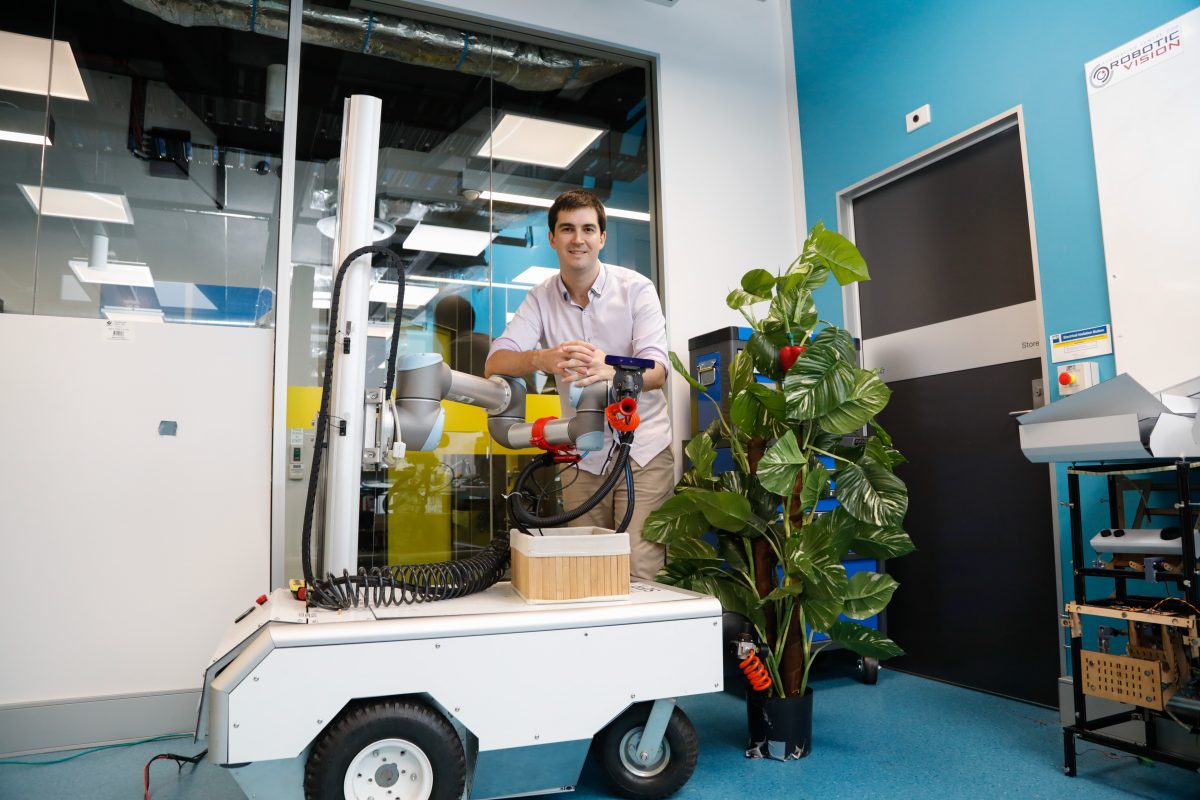
Dr Lehnert with capsicum-harvesting robot Harvey. Credit: QUT
Robotic solutions to real-world challenges
Through ACRV, Dr Lehnert collaborated extensively with industry and with researchers nationwide to deliver robotics with real-world application: smart, AI-enabled bots and automated systems to pick fruit, manage weeds, monitor crown of thorns starfish on Queensland’s Great Barrier Reef – even ‘pick and stow’ items to help ecommerce juggernaut Amazon solve its warehousing problems.
At QCR, building on the results of a decade’s investment into robotic research and translation through ACRV, he and his colleagues continue their world-leading research in intelligent robotics, translating fundamental research into real-world outcomes benefiting industry and society. ‘
The applications of QCR’s wide-ranging research projects extend to agriculture, health and medicine, environmental monitoring, infrastructure monitoring, manufacturing, mining and construction. Recently, QCR was dubbed the nation’s best robotics facility.
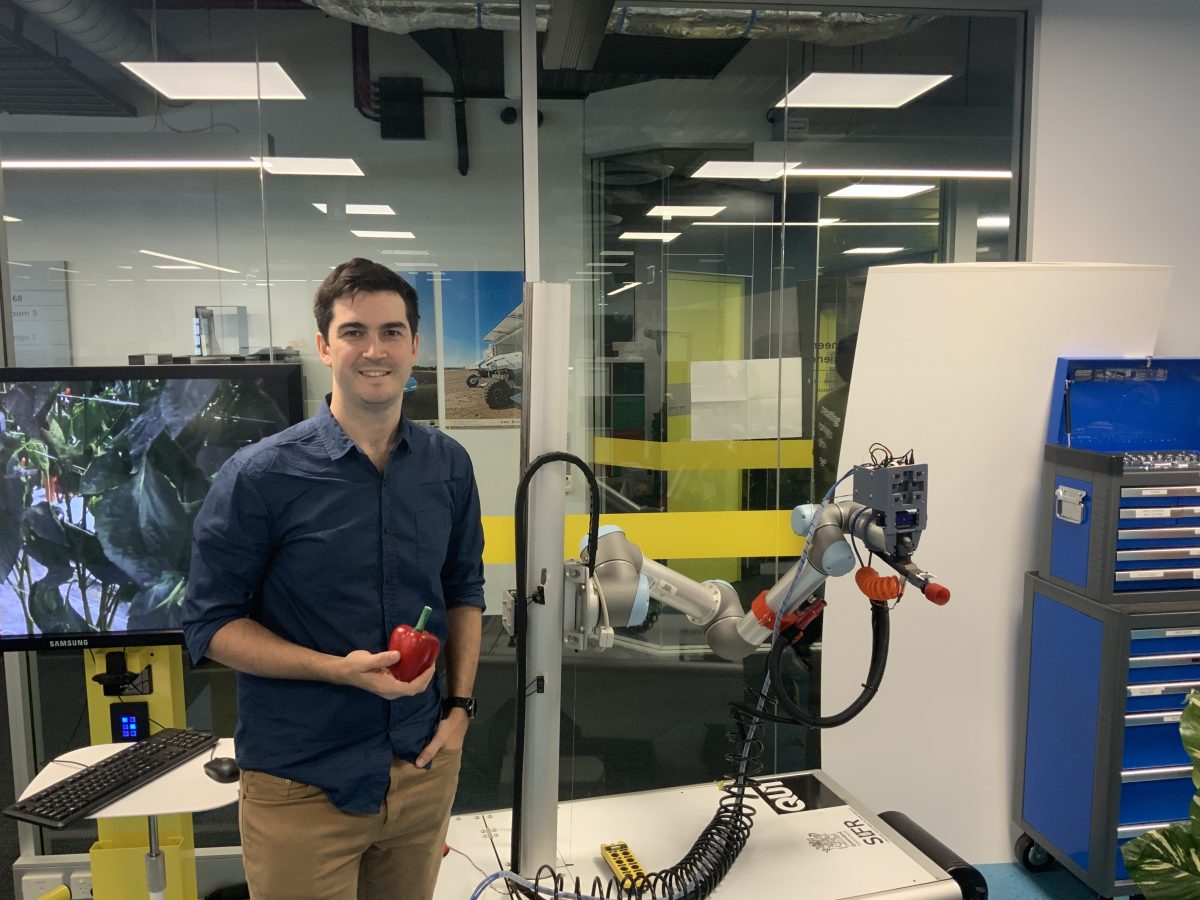
Dr Lehnert with Harvey and one of the harvested capsicums. Credit: Future Food Systems
Automated crop harvesting
An early success for Lehnert was ‘Harvey’, a machine-vision-backed, AI-enabled robotic harvester able to successfully identify and pick up to 75 per cent of fruit from greenhouse-grown capsicum plants in experimental trials.
A winning solution for Amazon’s warehousing problem
In 2017, Lehnert was part of a 27-strong nationwide robotics team led by ACRV that took out first prize (and US$80,000) in the global Amazon Robotics Challenge in Japan. The Challenge called for novel ways to ‘fill a gap in Amazon.com’s automated warehousing processes’.
The ACRV team’s winning formula was a custom-built robot, ‘Cartman’, with an innovative Cartesian manipulator, six degrees of articulation, the ability to move along three axes similar to the action of a gantry crane, and a rotating gripper enabling it to pick up items using either suction or a ‘two-finger’ grip.
Robust, cost-effective and with the flexibility to accomplish tasks off-the-shelf ‘bots can’t, Cartman solved a pressing robotics problem for Amazon: how to pick items and pack them in boxes in an unstructured environment.
“Everything from the robot design, vision systems and grasping system worked flawlessly in the Finals,” Lehnert said at the time. “The competition was tough, so many of the improbable scenarios that we thought would never occur did occur.”
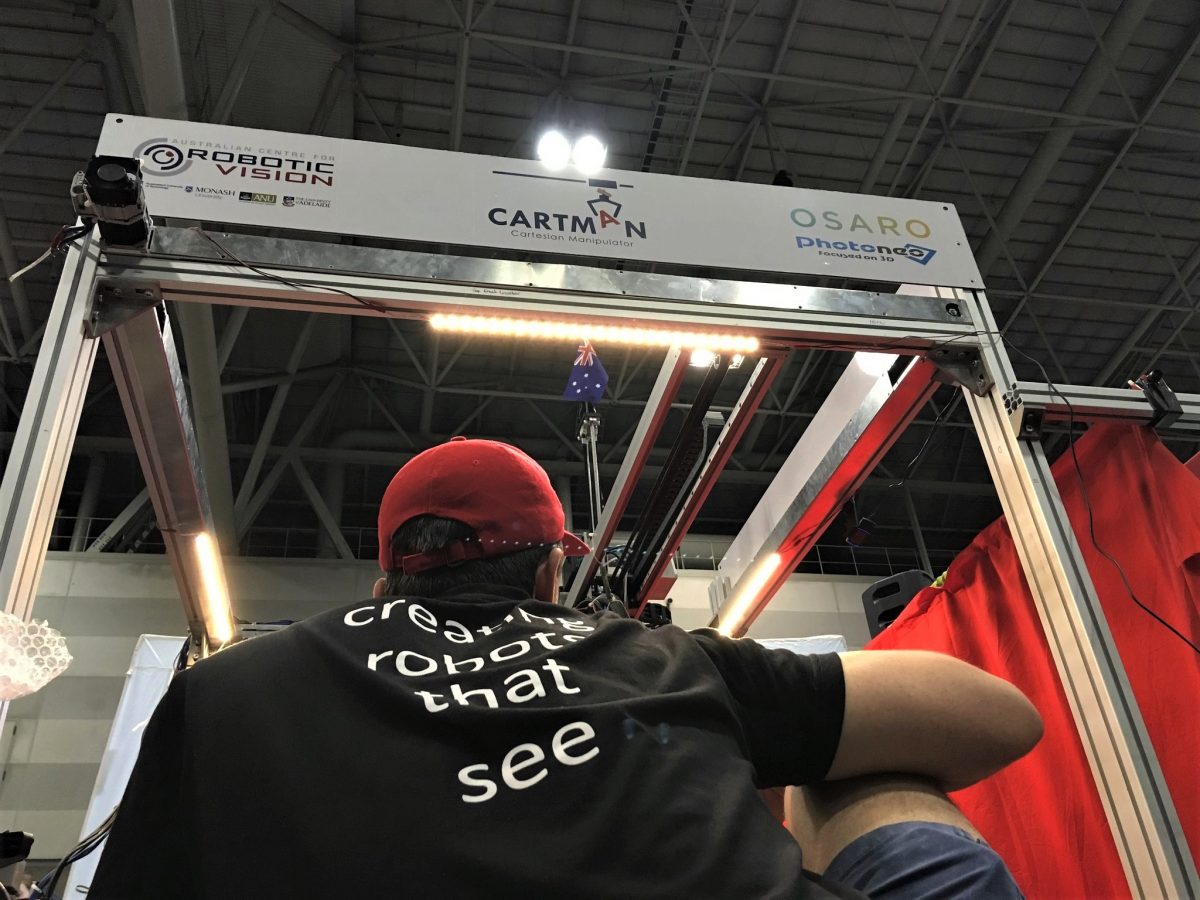
Chris and teammates took out the Amazon Robotics Challenge in 2017 with ‘Cartman’, their innovative pick-and-stow robot. Credit: QUT
Delivering cutting-edge components for high-tech indoor farms
Currently, Dr Lehnert’s focus is on developing robotics and smart technology for vertical and indoor protected cropping – including leading a collaborative industry-research team in a recently commenced project under the CRC’s Research Program 2.
As research lead on the CRC’s ‘Modular vertical Growing system’ project, he worked with Greenbio engineers to help them design and validate configuration, automation and resource-efficiency solutions to practical challenges Greenbio had identified through operating its Redlands facility, in Brisbane’s south-east. The QUT-Greenbio research team used iterative design to develop a novel modular vertical growing solution for Greenbio. Unfortunately, the project was suspended midway, thank to difficulties experienced by the industry partner. It would have gone on to deploy state-of-the-art simulation and additive manufacturing – 3D printing – techniques to rapidly prototype the most promising systems, then evaluated these prototypes in the field, analysing each potential new growing system’s inputs and outputs using an Internet of Things (IoT), sensor-based experimental framework. Through this research, the team was aiming to solve some of the technical and economic challenges that limit wider adoption of intensive cropping in urbanised environments.
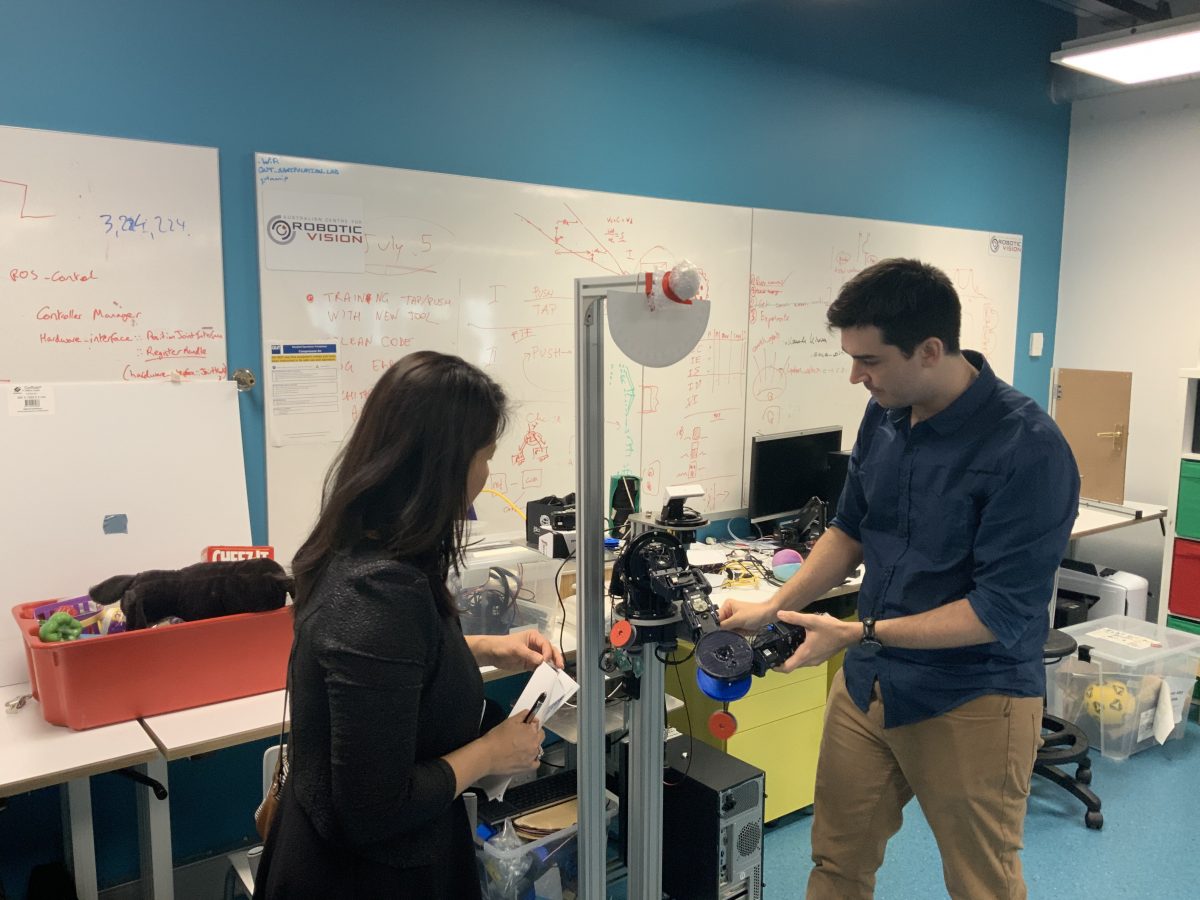
CRC Research & Commercialisation Director Prof. Cordelia Selomulya with Dr Lehnert in the robotics lab at QUT. Credit: Future Food Systems
Automating future farming
Dr Lehnert views automated indoor cropping as a sustainable adjunct to, rather than a replacement for conventional farming. That said, he believes robotics and automation will make valuable contributions to Australia’s future agrifood sector.
“The future potential of robotics in indoor protected cropping will be their ability to intelligently sense, think and act in order to reduce production costs and maximise output value in terms of crop yield and quality,” Dr Lehnert says.
“Robotics taking action, such as autonomous harvesting within indoor protected cropping, will be a game-changer for growers who are struggling to reduce their production costs.


